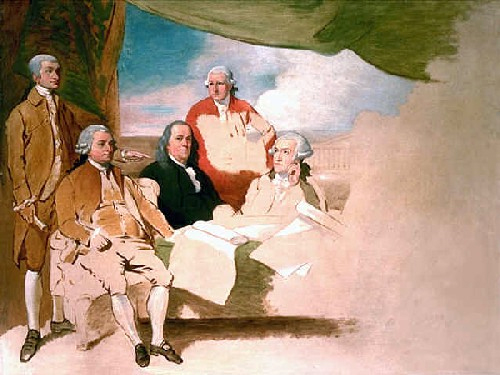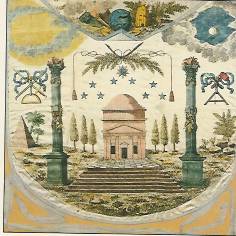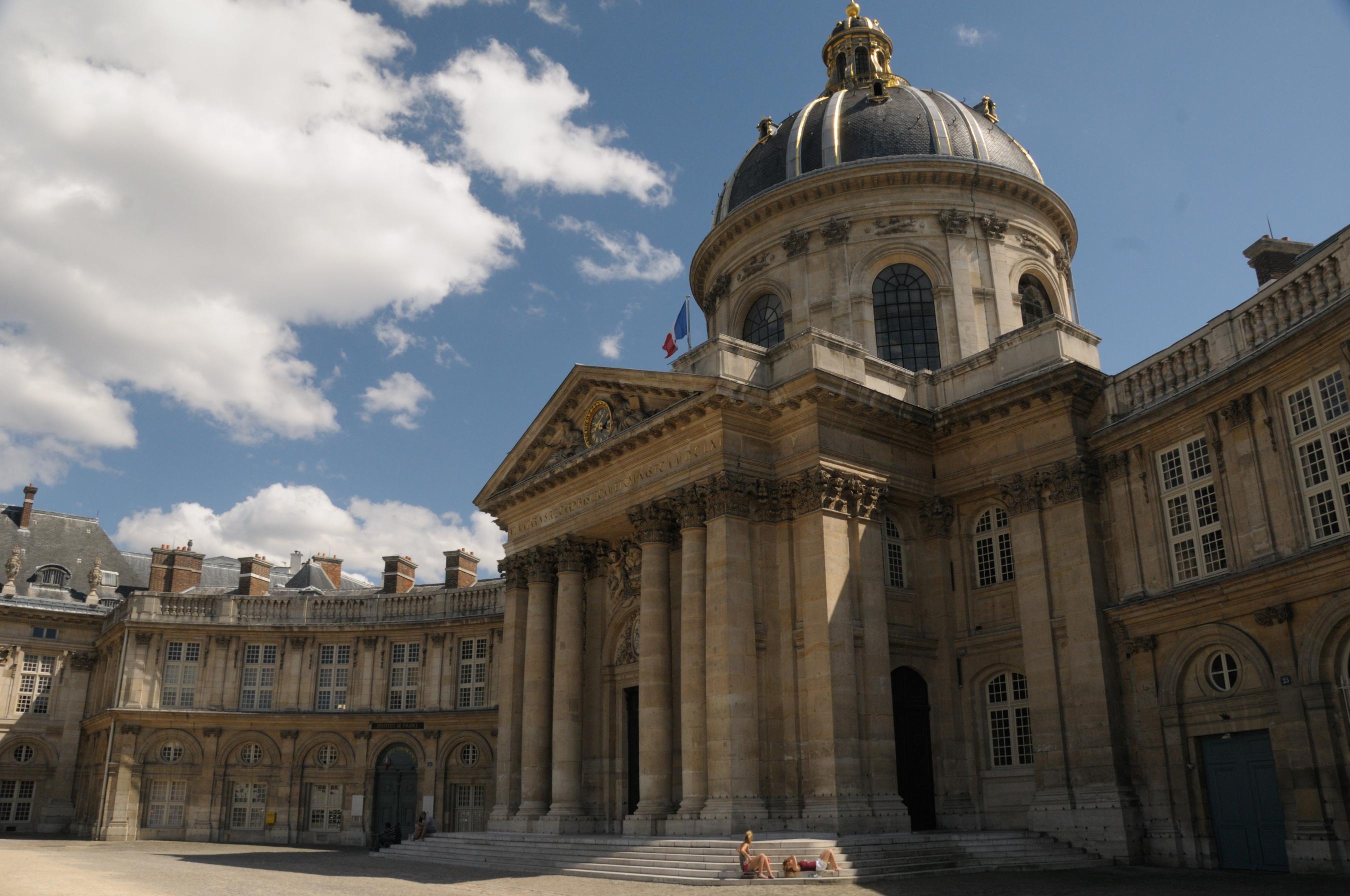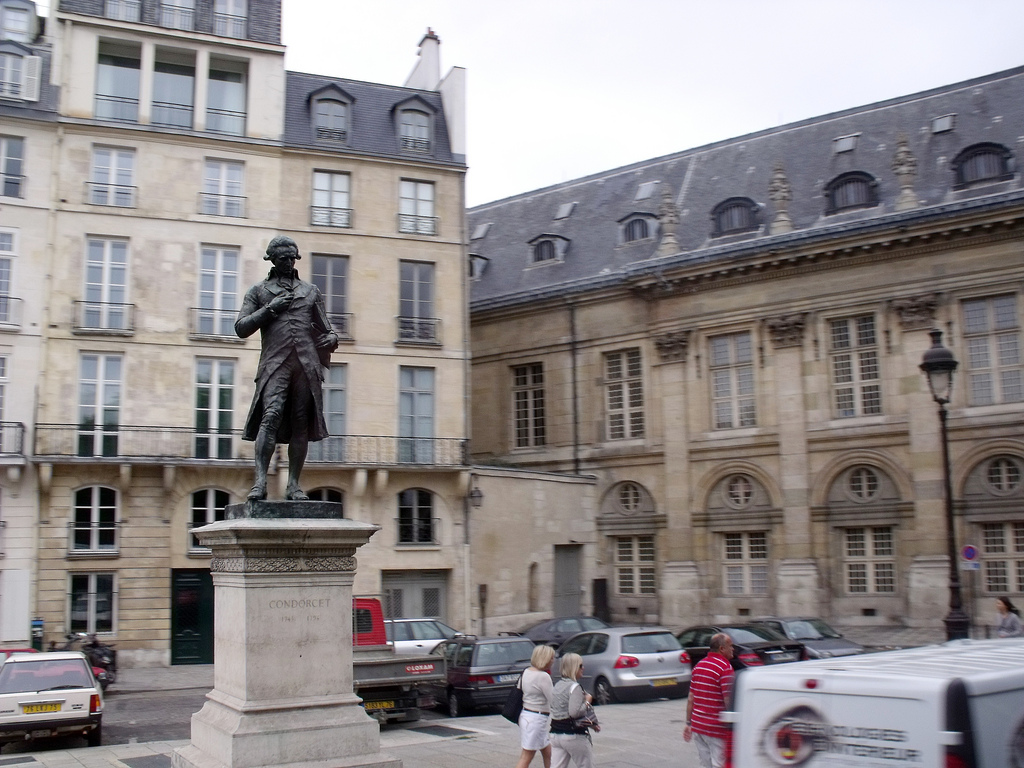
Benjamin West (1738–1820)
American Commissioners of the Preliminary Peace Agreement with Great Britain, 1783-1784
Benjamin West painting titled "American Commissioners of the Preliminary Peace Agreement with Great Britain" also sometimes referred to as "Treaty of Paris" (unfinished painting - from left to right) John Jay, John Adams, Benjamin Franklin, Henry Laurens, and William Temple Franklin. The British commissioners refused to pose, and the picture was never finished.
First American Writer on the Left Bank
Although the exact building no longer exists, this was approximately where the Hôtel d'Orléans stood. John Jay, then U.S. envoy to Madrid, lived here in 1782 and 1783 while negotiating the peace treaty with Britain commemorated on the Rue Jacob plaque we just saw. In fact, the negotiations themselves took place to a great extent in this hôtel. There were negotiators for both sides not mentioned on the plaque, as they were not signatories to the agreement: Henry Laurens and Ben's grandson/secretary William Temple Franklin for the Americans and Richard Oswald for the British. Benjamin West began a painting of the men who negotiated the Treaty of Paris, but when the British delegation refused to pose, West abandoned the project.
As with all negotiations, some proposals wound up on the cutting-room floor, the most famous of which include Franklin's quest to obtain Canada from Britain, fearing that sharing a border with British territory would eventually spell trouble. What the British did agree to was considerably expanded American boundaries - to the detriment of the Indian tribes that had been Britain's allies. The treaty's ten provisions ranged from the historic (acknowledging the colonies as free and sovereign states) to the administrative (timeline for ratification) to the practical ("The navigation of the river Mississippi, from its source to the ocean, shall forever remain free and open to the subjects of Great Britain and the citizens of the United States.").
Thomas Jefferson also stayed here briefly, upon arriving in 1784 to succeed Benjamin Franklin as U.S. minister. So, despite what we've all heard about the Lost Generation, the first American writer on the Left Bank, indeed in all of Paris, was the author of the Declaration of Independence, as Franklin's famous Autobiography would not begin to be published until 1791, after his death. Its first edition, by the way, was published in French, in Paris.
This would be a good spot to point out that the Masonic Lodge of the Nine Sisters, mentioned earlier, was down this street to your right at what is now about number 80, Rue Bonaparte, near the mairie (town hall) of the 6th arrondissement. (Paris has not only an overall mayor and city hall, the Hôtel de Ville, but also a town hall, mayor and district council for each of the 20 arrondissements.) The Nine Sisters Lodge was founded on July 5, 1776, as a learned society devoted to the spread of Enlightenment ideas. Franklin was very active in it, becoming lodge master in 1779 and so inheriting, among other regalia, the Masonic apron first worn by the philosopher Helvétius and then by Voltaire, whom Franklin escorted to his Freemason induction in April 1778, a few weeks before the latter's death. Unfortunately, the curator of the Masonic Museum (Musée de la Franc-Maçonnerie) at 16, Rue Cadet in the 9th arrondissement reported a few years ago that the apron on display there, long considered the one in question, is now believed to be of 19th century origin, and has been relabeled "supposedly Voltaire's."

Apron formerly thought to have been worn by Benjamin Franklin
Franklin's role as lodge master helped him further the cause of the American Revolution. When the lodge held a special assembly for Franklin before his return to the United States, the Duc de Rochefoucauld distributed copies of the Declaration of Independence to lodge members. Another member of the lodge was Lafayette, whose Masonic sword can be seen in the museum in Rue Cadet; its provenance, at least, is thus far undisputed.


